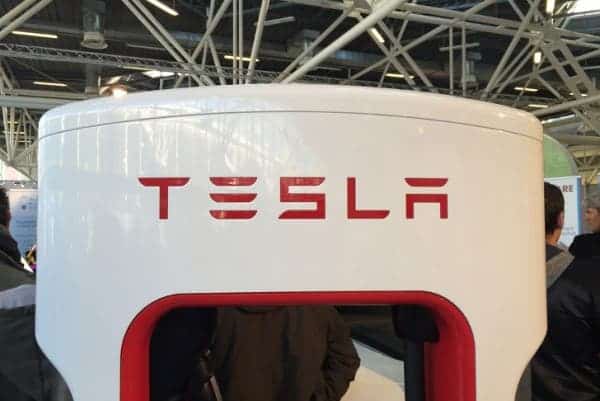About a month ago, we were telling you about a new battery for houses Tesla was working on, that might revolutionize home energy and bring forth massive change in renewable energy – now, the official announcement is out. Homeowners will be able to get the Powerwall battery, in 7 or 10 kilowatt modules, which will cost $3000 and $3500 respectively.

When dealing with electric cars and even renewable energy, storing energy is one of the major problems – you get a lot of wind and solar energy during some periods, and not that much during other periods. If you could somehow store that energy efficiently, then suddenly renewables become much more viable. Enter the stage Tesla.
“It’s really great. I’m really excited about it,” Musk said in February. Mass production could be only six months away, he added. He also stated that the battery will feature a chique design which will blend into any home design.
Tesla addressed homeowners directly, who can start integrating renewables much more effectively, but the new battery also comes with an industrial option – the Powerpack, sold in 100 kilowatt-hour modules at $25,000 each is remarkable too. But perhaps even more importantly, the biggest impact on energy storage might come at the electricity grid as a whole. A late 2014 study by the Brattle Group, prepared for mega-Texas utility Oncor, found that energy storage “appears to be on the verge of becoming quite economically attractive” and that the benefits of deploying storage across Texas would “significantly exceed costs” thanks to improved energy grid reliability. Storage is a game changer.

“Once we’re able to rely on renewable energy sources for our power consumption, the top 50% of the dirtiest power generation resources could retire early. We would have a cleaner, smaller, and more resilient energy grid,” Tesla said in a press release.
“With Tesla Energy, Tesla is amplifying its efforts to accelerate the move away from fossil fuels to a sustainable energy future with Tesla batteries, enabling homes, business, and utilities to store sustainable and renewable energy to manage power demand, provide backup power and increase grid resilience. Tesla is already working with utilities and other renewable power partners around the world to deploy storage on the grid to improve resiliency and cleanliness of the grid as a whole.”
The net effect, if everything goes according to plan, will be a greening of homes, and maybe even electric cars. Shifting away from the grid and onto a private power system will turn from nigh impossible to feasible. This will not only encourage the usage of clean energy, but it will also help owners save a lot of money on energy bills.
“A cost effective home energy storage system it could prove far more valuable, and profitable, than anything the company is doing with automobiles,” Karl Brauer, a senior analyst with auto industry research firm Kelley Blue Book, said.
There’s also another element which makes the batteries even more attractive. They can charge using solar power, but they can also integrate with the grid, to give clients flexibility to draw energy from their own reserve, or to draw energy from the grid, when electricity is cheapest. The flexibility it gives you and the potential it enables for saving money is just insane.
This might be one of the missing puzzle pieces to enable humanity to move on to fully (or almost fully) renewables.
“This is within the power of humanity to do,” founder and CEO Elon Musk said. “It is not impossible, it is something that we can do. But there’s going to [need to] be other companies involved.”
You can read Tesla’s full press release and find out more about the battery here.


